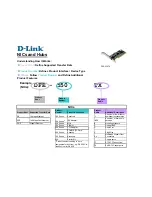
ZXR10 2900 Series User Manual
as Trunk. It allows parallel physical links between the switches or
between the switch and the server to increase the bandwidth in
multiples and simultaneously. As a result, it becomes an import
technology in broadening link bandwidth and creating link trans-
mission flexibility and redundancy.
Aggregated link is also called trunk. If a port of the trunk is blocked
or faulty, the data packets will be distributed to other ports of this
trunk for transmission. If this port recovers, the data packets will
be re-distributed to all the normal ports of this trunk for transmis-
sion.
ZXR10 2920/2928/2952/2936-FI supports up to 15 aggregation
groups. In each aggregation group, the number of links participat-
ing in the aggregation does not exceed eight. Links participating
in the aggregation must have the same transmission media type
and the same transmission rate.
Basic Configuration of LACP
LACP configuration on the switch includes the following contents:
Command
Function
zte(cfg)#
set lacp
{
enable
|
disable
}
This enables or disables
LACP function. By
default, the LACP
function is disabled.
zte(cfg)#
set lacp aggregator
<
trunkid
>
add port
<
portlist
>
This adds a specified
port to LACP
aggregation group.
zte(cfg)#
set lacp aggregator
<
trunkid
>
delete port
<
portlist
>
This deletes a specified
port from LACP
aggregation group.
zte(cfg)#
set lacp aggregator
<
trunkid
>
mode
{
dynamic
|
static
|
mixed
}
This sets aggregation
mode of aggregation
group.
zte(cfg)#
set lacp port
<
portlist
>
timeout
{
long
|
short
}
This configures the
timeout information of
the port participating in
the aggregation.
zte(cfg)#
set lacp port
<
portlist
>
mode
{
active
|
passive
}
This sets the mode
used by the port
to participate in the
aggregation.
zte(cfg)#
set lacp priority
<
1-65535
>
This sets the priority of
LACP.
zte(cfg)#
show lacp
This displays the
LACP configuration
information.
92
Confidential and Proprietary Information of ZTE CORPORATION
















































